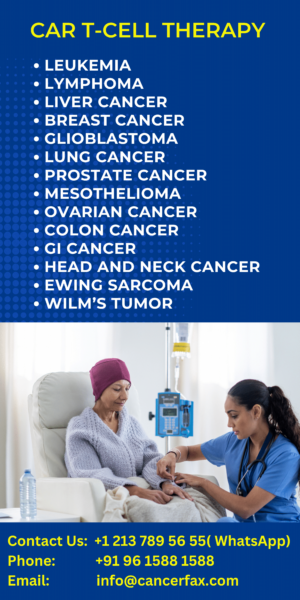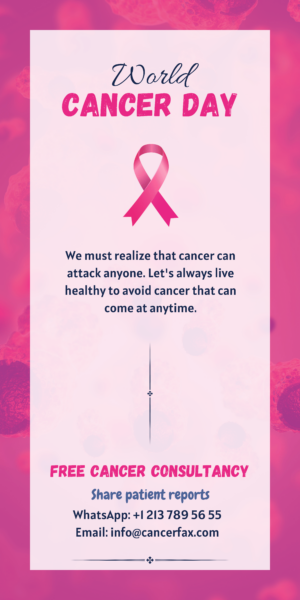Bile duct cancer (cholangiocarcinoma)
What is bile duct cancer (cholangiocarcinoma)?
Cholangiocarcinoma is a cancer that develops in the bile ducts, which transport the digesting fluid bile. Bile ducts are tubes that run from your liver to your gallbladder and small intestine.
Cholangiocarcinoma, often known as bile duct cancer, is more common in persons over 50, but it can strike anyone at any age.
Cholangiocarcinoma is classified into four categories based on where the cancer develops in the bile ducts:
- Intrahepatic cholangiocarcinoma occurs in the parts of the bile ducts within the liver and is sometimes classified as a type of liver cancer.
- Hilar cholangiocarcinoma occurs in the bile ducts just outside of the liver. This type is also called perihilar cholangiocarcinoma.
- Distal cholangiocarcinoma occurs in the portion of the bile duct nearest the small intestine. This type is also called extrahepatic cholangiocarcinoma.
Cholangiocarcinoma is frequently discovered after it has progressed, making effective treatment challenging.
Symptoms of cholangiocarcinoma
Signs and symptoms of cholangiocarcinoma include:
- Yellowing of your skin and the whites of your eyes (jaundice)
- Intensely itchy skin
- White-colored stools
- Fatigue
- Abdominal pain on the right side, just below the ribs
- Losing weight without trying
- Fever
- Night sweats
- Dark urine
Causes of cholangiocarcinoma
Cholangiocarcinoma develops when the DNA of cells in the bile ducts changes. The DNA of a cell includes the instructions that tell it what to do. The modifications cause the cells to grow uncontrollably, resulting in a mass of cells (tumor) that can infiltrate and kill healthy body tissue. What causes the alterations that lead to cholangiocarcinoma is unknown.
Factors that may increase your risk of cholangiocarcinoma include:
- Primary sclerosing cholangitis. This disease causes hardening and scarring of the bile ducts.
- Chronic liver disease. Scarring of the liver caused by a history of chronic liver disease increases the risk of cholangiocarcinoma.
- Bile duct problems present at birth. People born with a choledochal cyst, which causes dilated and irregular bile ducts, have an increased risk of cholangiocarcinoma.
- A liver parasite. In areas of Southeast Asia, cholangiocarcinoma is associated with liver fluke infection, which can occur from eating raw or undercooked fish.
- Older age. Cholangiocarcinoma occurs most often in adults over age 50.
- Smoking. Smoking is associated with an increased risk of cholangiocarcinoma.
- Diabetes. People who have type 1 or 2 diabetes may have an increased risk of cholangiocarcinoma.
- Certain inherited conditions. Some DNA changes passed from parents to children cause conditions that increase the risk of cholangiocarcinoma. Examples of these conditions include cystic fibrosis and Lynch syndrome.
How to prevent cholangiocarcinoma?
Quit smoking: A higher risk of cholangiocarcinoma has been associated to smoking. Stop smoking if you do. If you’ve attempted to quit before but haven’t been successful, talk to your doctor about quitting tactics.
Reduce your risk of developing liver disease: A higher incidence of cholangiocarcinoma is linked to chronic liver illness. Some causes of liver disease are unavoidable, but others can be avoided. Do everything you can to protect your liver.
If you prefer to drink, for example, drink in moderation to lower your risk of liver inflammation (cirrhosis). That is up to one drink per day for women and up to two drinks per day for men for healthy people. Maintain a healthy body mass index (BMI). Follow the safety recommendations while working with chemicals.
Diagnosis of cholangiocarcinoma
Liver function test: Blood tests to assess your liver function can provide hints to your doctor as to what’s causing your symptoms.
Tumor marker test:
The level of carbohydrate antigen (CA) 19-9 in your blood may provide further information to your doctor regarding your diagnosis. CA 19-9 is a protein that bile duct cancer cells overproduce.
However, a high amount of CA 19-9 in your blood does not necessarily indicate that you have bile duct cancer. Other bile duct illnesses, such as bile duct inflammation and occlusion, can produce this effect.
ERCP: A thin, flexible tube with a tiny camera is sent down your neck and into your digestive tract to your small intestine during endoscopic retrograde cholangiopancreatography (ERCP). The camera is utilized to look at the connection between your bile ducts and your small intestine. This treatment may also be used to infuse dye into the bile ducts to make them appear more clearly on imaging studies.
Imaging tests: Your doctor can use imaging tests to look at your internal organs and seek for signs of cholangiocarcinoma. Ultrasound, computerized tomography (CT) scans, and magnetic resonance imaging (MRI) combined with magnetic resonance cholangiopancreatography are all used to identify bile duct cancer (MRCP). MRCP is becoming a more popular noninvasive option to ERCP. It provides 3D images without requiring the use of a dye to enhance the visuals.
Biopsy:
A biopsy is a technique in which a tiny sample of tissue is removed and examined under a microscope.
If the suspicious area is close to where the bile duct meets the small intestine, your doctor may do an ERCP to collect a biopsy sample. If the suspicious spot is located within or near the liver, your doctor may take a tissue sample by passing a long needle through your skin to the affected area (fine-needle aspiration). To guide the needle to the precise place, he or she may employ an imaging test, such as an endoscopic ultrasound or CT scan.
The manner in which your doctor obtains a biopsy sample may have an impact on the therapy options available to you subsequently. You will be ineligible for liver transplantation if your bile duct carcinoma is biopsied by fine-needle aspiration. Do not be afraid to inquire about your doctor’s experience with cholangiocarcinoma diagnosis. Get a second opinion if you have any doubts.
Treatment of cholangiocarcinoma
Treatments for cholangiocarcinoma (bile duct cancer) may include:
Surgery: Whenever possible, doctors attempt to remove as much cancer as possible. This entails cutting a portion of the bile duct and reconnecting the cut ends for very tiny bile duct tumors. Nearby liver tissue, pancreatic tissue, or lymph nodes may be removed as well for more advanced bile duct tumors.
Liver transplant: For those with hilar cholangiocarcinoma, surgery to remove your liver and replace it with one from a donor (liver transplant) may be an option in some cases. A liver transplant can be a cure for many people with hilar cholangiocarcinoma, but there is a chance that the cancer will come back after the transplant.
Chemotherapy: Chemotherapy is a treatment that uses chemicals to kill cancer cells. Before a liver transplant, chemotherapy may be utilized. It may also be an option for those with advanced cholangiocarcinoma who want to slow down the disease and alleviate symptoms. Chemotherapy medications can be injected into a vein and spread throughout the body. Alternatively, the medications can be supplied in such a way that they reach cancer cells directly.
Radiation therapy: To kill cancer cells, radiation therapy uses high-powered energy beams from sources such as X-rays and protons. A equipment that sends radiation beams at your body can be used in radiation therapy (external beam radiation). It could also entail injecting radioactive material into your body near the cancerous location (brachytherapy).
Targeted therapy: Targeted medication treatments are designed to target specific abnormalities found in cancer cells. Targeted medication treatments can kill cancer cells by inhibiting these aberrations. Your doctor may examine your cancer cells to see if targeted therapy for cholangiocarcinoma is beneficial.
Immunotherapy: Immunotherapy is a type of cancer treatment that makes use of your immune system. Because cancer cells create proteins that assist them hide from immune system cells, your body’s disease-fighting immune system may not attack your cancer. Immunotherapy works by interfering with the immune system’s natural processes. Immunotherapy may be an option for advanced cholangiocarcinoma patients who have failed to respond to conventional treatments.
Heating cancer cells: Electric current is used to heat and destroy cancer cells in radiofrequency ablation. The doctor inserts one or more thin needles into small incisions in your belly using an imaging test, such as ultrasound, as a guide. When the needles reach the tumour, an electric current heats them up, killing the cancer cells.
Photodynamic therapy: A light-sensitive chemical is injected into a vein and accumulates in rapidly proliferating cancer cells in photodynamic treatment. The cancer cells die as a result of a chemical reaction caused by laser light directed at them. Multiple treatments are usually required. Photodynamic therapy can make you feel better and may even halt the progression of your cancer. After your treatments, you’ll need to stay out of the sun.
Biliary drainage: Biliary drainage is a technique that restores bile flow. It could entail inserting a tiny tube into the bile duct to drain the bile. Other options include bypass surgery to divert bile around the malignancy and stents to keep a cancer-affected bile duct open. Biliary drainage aids in the relief of cholangiocarcinoma signs and symptoms.
Take second opinion on bile duct cancer
- Comments Closed
- September 7th, 2021



Latest Posts
- Targeting FGFR4 and CD276 with CAR T-cells demonstrates a strong antitumor impact against children rhabdomyosarcoma
- Disruption of CD5 on CAR T Cells Enhances the Effectiveness of Anti-Tumor Treatment
- The future of gene therapy: What to expect in the next decade?
- Unlocking the genetic code: The future of gene therapy for genetic disorders
- CRISPR and gene editing: Revolutionizing gene therapy
- Aids cancer (4)
- Anal cancer (8)
- Anemia (5)
- Appendix cancer (3)
- Basal cell carcinoma (1)
- Bile duct cancer (7)
- Bladder cancer (10)
- Blog (3)
- Blood cancer (56)
- Bone cancer (11)
- Bone marrow transplant (43)
- Brain Tumor (48)
- Breast Cancer (48)
- Cancer (787)
- Cancer surgery (234)
- Cancer treatment in South Korea (341)
- cancer treatment in Thailand (331)
- Cancer treatment in Turkey (329)
- Cancer treatment in USA (328)
- CAR NK-Cell therapy (12)
- CAR T-Cell therapy (95)
- Cervical cancer (41)
- Chemotherapy (36)
- Childhood cancer (2)
- Cholangiocarcinoma (3)
- Clinical trials (5)
- Colon cancer (95)
- Coronavirus (1)
- Cosmetic surgery (7)
- COVID19 (2)
- Doctor (37)
- Drugs (19)
- Endometrial cancer (9)
- Esophageal cancer (15)
- Eye cancer (9)
- Gall bladder cancer (3)
- Gastric cancer (22)
- Glioblastoma (1)
- Gynecological cancer (2)
- Head and neck cancer (20)
- Hematological Disorders (50)
- Hospital (47)
- Immunotherapy (25)
- Kidney cancer (10)
- Laryngeal cancer (1)
- Leukemia (44)
- Liver cancer (94)
- Lung cancer (65)
- Lymphoma (44)
- MDS (2)
- Medical tourism (71)
- Medical visa (11)
- Melanoma (8)
- Merkel cell carcinoma (1)
- Mesothelioma (4)
- Myeloma (22)
- Oral cancer (13)
- Ovarian Cancer (13)
- Pancreatic cancer (39)
- Penile cancer (1)
- Procedure (19)
- Prostrate cancer (10)
- Proton therapy (26)
- Radiotherapy (35)
- Rectal cancer (57)
- Sarcoma (11)
- Skin Cancer (13)
- Spine surgery (8)
- Stomach cancer (40)
- Surgery (54)
- Systemic mastocytosis (1)
- T Cell immunotherapy (2)
- T-Cell therapy (7)
- Testicular cancer (5)
- Thoracic surgery (2)
- Throat cancer (6)
- Thyroid Cancer (14)
- Treatment (746)
- Treatment in China (646)
- Treatment in India (684)
- Treatment in Israel (586)
- Treatment in Malaysia (360)
- Treatment in Singapore (255)
- Treatment in South Korea (238)
- Treatment in Thailand (233)
- Treatment in Turkey (233)
- Uncategorized (39)
- Urethral cancer (9)
- Urosurgery (14)
- Uterine cancer (3)
- Vaginal cancer (6)
- Vascular cancer (5)
- Vulvar cancer (1)






Privacy Overview